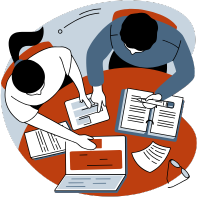Before ethics and compliance leaders can effectively influence business strategy or partner with their respective Boards, they need one critical thing: a deep understanding of the business itself. Without this, efforts to embed compliance into operations or provide meaningful insights to directors can fall flat.
Establishing yourself as a credible partner starts with curiosity, connection, and a clear view of how the business works. Here’s how experienced CECOs approach that early stage:
- Prioritize immersion over assumption. Spend your first weeks or months not issuing directives but listening, observing, and learning. Meet with business unit leaders, visit key sites, and walk the floor. This helps you understand not just policies and risks—but the people, pressures, and priorities that shape them.
- Tailor compliance to strategy, not the other way around. Once you understand the drivers of the business, you can map E&C into them. This shifts the role from a risk-oriented oversight function to a strategic enabler that helps business units execute compliantly without slowing them down.
- Build trust through presence. Whether it’s sector presidents or frontline teams, showing up and engaging directly builds the relationships you’ll rely on later, especially when you need support on difficult issues. People are more receptive to feedback and guidance from someone who’s taken the time to understand their world.
- Let the board see your intent before your agenda. Boards already know you’re qualified. Use early meetings to show who you are: someone committed to the company’s success, not just its legal safety net. Relationship-building comes first; credibility follows.
- Adapt to your organization’s reality. Sometimes, you join an organization during a period of calm. Sometimes, it’s mid-crisis. Either way, you have to assess the environment and decide whether your first move is listening, acting, or both. Situational awareness is part of leadership.
- Recognize that credibility takes time. Even if you’re a subject matter expert, your real influence will come from how well you connect what you know to what your organization values. Confidence grows as you learn the business, build relationships, and demonstrate relevance.
Understanding the business isn’t a box to check. It’s an ongoing investment of time that lays the foundation for every strategic conversation that follows.
The 2025 Compliance Program Self-Assessment Worksheet is now available! Built from our industry-leading Ethics Quotient® (EQ) questionnaire and benchmarking from this year’s list of World’s Most Ethical Companies® honorees, this 16-question program assessment worksheet is the first step for compliance leaders looking to gain a unique glimpse into the overall effectiveness of their work to date, especially when paired with our automated Compliance Program Self-Assessment. Download your free copy today!






